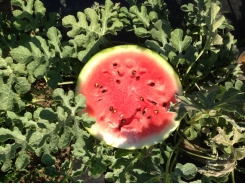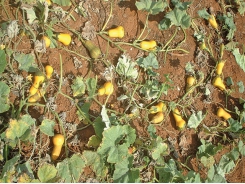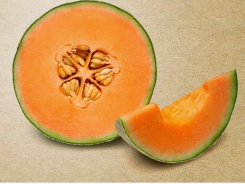Carrots – who said they must be orange?

The carrot – Daucus carota subspecies sativus – has been used by humankind for thousands of years. The vegetable’s wild ancestors look a lot different though.
Purple carrots are staging a slow comeback. Photo: Bill Kerr
Originating in Afghanistan and the surrounding region, they are purple and white, and still grow wild in places like Pakistan.
Because of its ancestry, early domesticated carrots were purple – and now this colour is coming back into fashion as consumers look for something different, as well as the various antioxidants that come with different colours.
Purple carrots have anthocyanin, which has analgesic and anti-inflammatory properties. The yellow variety, which was also available very early on, is rich in the antioxidant lutein. This is found in the retina, where it may help to provide UV protection.
Three subsequent varieties
Orange, red and white domesticated carrots appeared later. The orange variety, today’s most well-known colour, contains the antioxidant carotene, whereas red carrots contain the antioxidant lycopene.
This is also found in tomatoes. The latest evidence suggests that the popular orange variety originated in the early 1500s. No one is sure whether the colour came about due to a cross or a mutation.
Orange carrots certainly dominate the world, but red is popular in certain countries, especially in Pakistan, India and Japan. I came across extremely long (60cm), pointed, red carrots in Japan.
We can thank the Dutch and French for the development of superior modern varieties. From these, hundreds of hybrids have been developed.
Unfortunately, appearance has received more attention than taste, as most consumers purchase with the eye rather than the palate. Tomatoes have succumbed to a similar fate.
Not all carrots shape up
As with colour, shape is often a matter of tradition. In the USA, most varieties have the imperator shape which means that they’re rather long and taper to a point.
These are virtually unmarketable in South Africa, especially when their leaves are attached, as they tend to wilt at the tips and so are considered old by buyers. With pre-packs becoming popular in many areas, the cylindrical, blunt-tip Nantes shape is favoured, as it looks more attractive in cellophane packs.
This trend has accelerated in recent times, largely because the plastic packaging keeps moisture in and prolongs the shelf life of the carrots.
Bunching – no longer in use
Bunched carrots were at one stage highly popular in South Africa because consumers would be reassured that, if the tops were still lush and green, they were getting a fresh product.
This all changed when rising labour costs on the farms made ‘bunching’ too expensive. At the same time, although the practice proved that the product was fresh, it actually speeded up deterioration in quality as the leaves would draw moisture from the roots.
Baby carrots
The finger-sized Amsterdam carrots are intended to be served as whole carrots on the plate.
These are the original ‘baby carrots’ and are mature at this size. If you were to take conventional carrots and harvest them at the same size, they would have an earthy taste and quickly become flaccid.
A modern trend is to cross-cut long, thin carrots into sections and tumble them to make snacks or bite-sized portions on the plate.
Related news
Tools

Phối trộn thức ăn chăn nuôi

Pha dung dịch thủy canh

Định mức cho tôm ăn

Phối trộn phân bón NPK

Xác định tỷ lệ tôm sống

Chuyển đổi đơn vị phân bón

Xác định công suất sục khí

Chuyển đổi đơn vị tôm

Tính diện tích nhà kính

Tính thể tích ao









 Getting your carrot stand correct
Getting your carrot stand correct  Growing melons
Growing melons